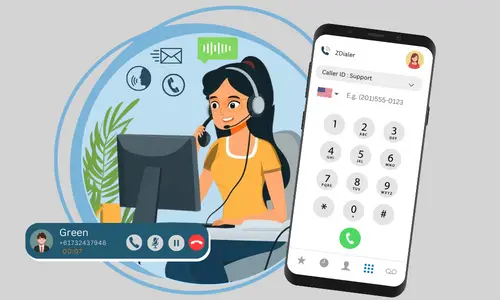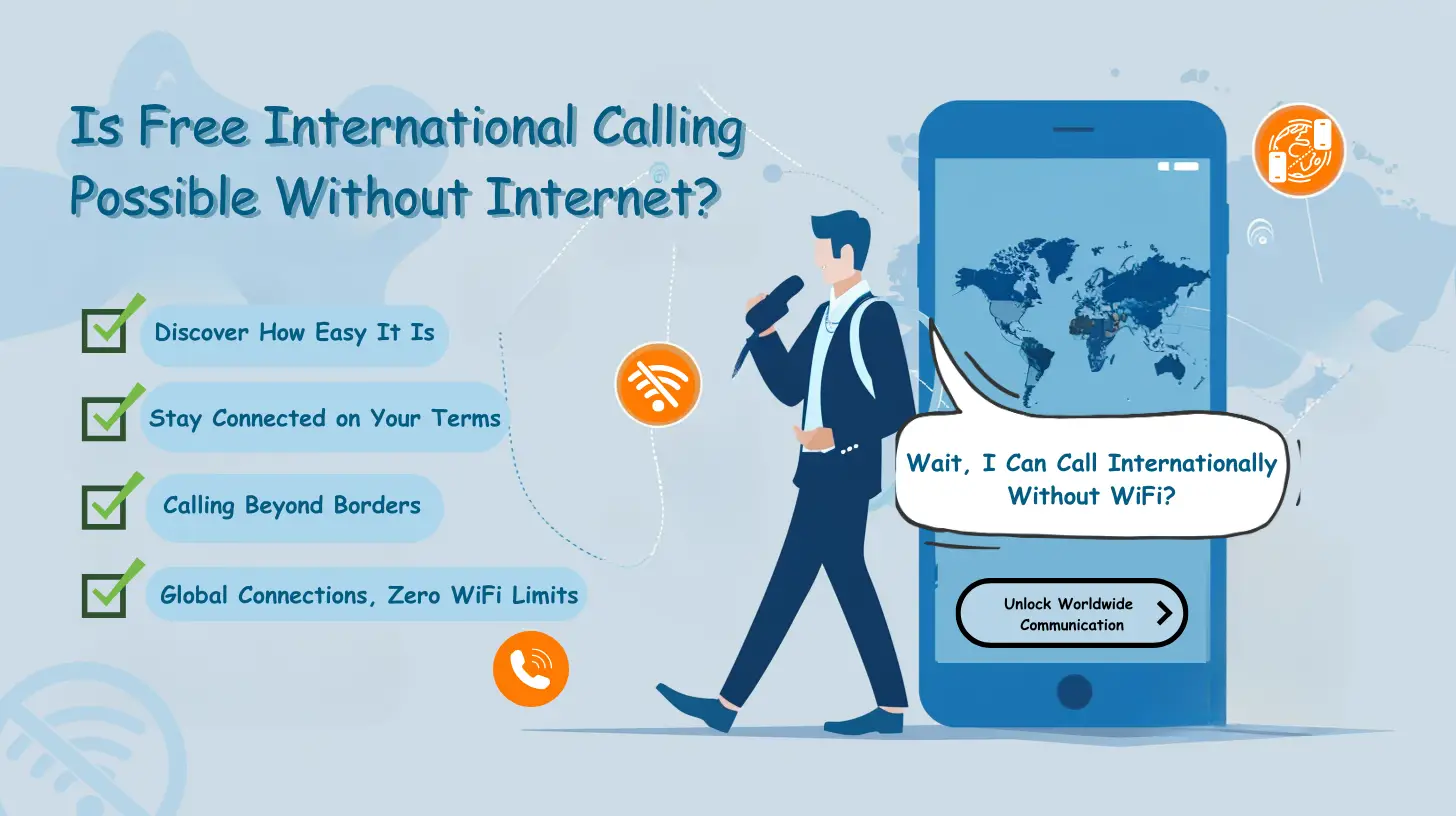Introduction
Voice Carrier RTP, also known as Real-time Transport Protocol, is an essential component in telecommunications that enables the transfer of real-time voice data over IP networks. Understanding how Voice Carrier RTP works and its role in communication is crucial for anyone involved in the telecommunications industry.
Voice Carrier RTP works by breaking down voice data packets into smaller units and transmitting them between the sender and receiver in real-time. These packets contain audio data, such as voice signals or digitized sounds, and are sent over IP networks using User Datagram Protocol (UDP).
The components of Voice Carrier RTP include the RTP Sender, which encodes and sends the voice packets, the RTP Receiver, which receives and decodes the voice packets, and the RTCP (Real-time Transport Control Protocol), which provides feedback and control information about the transmission quality.
The role of Voice Carrier RTP in communication is to ensure the reliable and timely delivery of voice data between participants in a conversation. It handles packet sequencing, time-stamping, and error detection to ensure that the voice data is received and played back in the correct order without distortion or delay.
Voice Carrier RTP is important in telecommunications because it enables real-time communication applications, such as voice calls, video conferences, and live streaming, to function smoothly and deliver high-quality audio. It allows for efficient transmission of voice data over IP networks, making it a fundamental technology for modern communication systems.
By understanding Voice Carrier RTP and its working principles, telecom professionals can optimize communication networks, troubleshoot issues, and ensure seamless voice transmission for the best user experience.
Key takeaway:
- Voice Carrier RTP enables real-time audio communication over IP networks: Voice Carrier RTP is a protocol that allows for the transmission of voice data packets between devices, ensuring clear and uninterrupted communication.
- Voice Carrier RTP consists of several components: The key components of Voice Carrier RTP include the RTP Sender, RTP Receiver, and RTCP. Each component plays a crucial role in ensuring reliable voice transmission.
- Voice Carrier RTP is essential in the telecommunications industry: Voice Carrier RTP plays a vital role in enabling voice calls, video conferencing, and other real-time audio applications. Its importance lies in its ability to deliver high-quality voice transmission and minimize delays.
What is Voice Carrier RTP?
Voice Carrier RTP, or Real-Time Transport Protocol, is a crucial component in the telecommunications industry. It allows for the seamless transmission of voice data packets over networks. Understanding the function and significance of Voice Carrier RTP is essential for anyone involved in the industry.
Here are some key facts about Voice Carrier RTP:
1. Voice Carrier RTP enables the transmission of voice data in real-time, ensuring minimal delay or interruption during a voice call. It ensures efficient and accurate transmission of voice packets.
2. Voice Carrier RTP organizes voice data into packets, including a sequence number, timestamp, and payload information. This allows for proper delivery and synchronization of the voice packets.
3. Voice Carrier RTP incorporates mechanisms to maintain the quality of voice calls. It prioritizes voice packets, giving them the highest priority to deliver a clear and uninterrupted conversation.
4. Voice Carrier RTP supports various audio codecs, which compress and decompress voice data. These codecs reduce the required bandwidth for voice transmission without compromising call quality. You can understand Voice Carrier RTP in 5 Minutes by My Country Mobile.
5. Voice Carrier RTP works with protocols like SIP (Session Initiation Protocol) to establish and control voice calls. It provides the necessary transport mechanism for voice data while SIP handles call setup and teardown.
6. Voice Carrier RTP is compatible with both traditional telephony networks (PSTN) and modern IP-based networks. This allows for seamless integration of voice services across different network infrastructures.
Voice Carrier RTP plays a significant role in enabling smooth and uninterrupted voice communication, whether it’s a business call, conference call, or personal conversation. It forms the backbone of voice communication over IP networks, ensuring reliable and high-quality delivery of voice calls.
How Does Voice Carrier RTP Work?
Voice Carrier RTP, or Real-Time Transport Protocol, is a crucial component in the process of transmitting
voice calls over the internet. Understanding how Voice Carrier RTP works is essential for anyone involved in the telecommunications industry or seeking to have a reliable and efficient voice communication system.
1. RTP Transmission: When a voice call is initiated, the audio data is divided into small packets and encoded using the RTP protocol. These packets are then transmitted over the network to the destination address.
2. Packet Delivery: RTP packets are continuously sent and received between the caller and the receiver, ensuring the real-time delivery of audio data. This real-time delivery is crucial for maintaining a smooth and uninterrupted voice conversation.
3. Protocol Efficiency: How does Voice Carrier RTP work? The RTP protocol operates on top of the User Datagram Protocol (UDP) rather than the Transmission Control Protocol (TCP). UDP is a transport protocol that provides a faster and more efficient delivery mechanism for real-time data like voice calls. Unlike TCP, UDP does not incorporate error-checking and retransmission mechanisms, making it more suitable for time-sensitive applications such as voice communication.
4. Quality of Service (QoS): To ensure a high-quality voice call, Voice Carrier RTP incorporates Quality of Service mechanisms. QoS prioritizes voice packets over other network traffic, minimizing latency and ensuring a consistent and reliable connection. This prioritization ensures that voice packets are delivered in a timely fashion, reducing the chances of delays or interruptions.
5. Codecs and Compression: RTP supports various audio codecs, which are responsible for encoding and decoding voice data. These codecs use different compression algorithms to reduce the size of the audio data while maintaining acceptable audio quality. Common codecs include G.711, G.729, and Opus.
6. Security Measures: Voice Carrier RTP can also be secured using encryption protocols such as Secure Real-Time Transport Protocol (SRTP). Encryption ensures that voice data remains confidential and cannot be intercepted or tampered with during transmission.
7. Compatibility: Voice Carrier RTP is widely supported by VoIP (Voice over Internet Protocol) systems and is compatible with various devices and platforms. It allows for seamless voice communication between different endpoints and ensures interoperability across different networks.
In summary, Voice Carrier RTP enables the real-time transmission of voice data over the internet, prioritizing quality and efficiency. It works by dividing voice data into small packets, using the RTP protocol for transmission, and incorporating Quality of Service mechanisms for optimal performance. Understanding how does Voice Carrier RTP work is vital in designing and maintaining reliable voice communication systems.
What are the Components of Voice Carrier RTP?
Discover the key components that make up Voice Carrier RTP in just 5 minutes! In this section, we’ll unravel the elements that form the backbone of Voice Carrier RTP.
Get ready to dive into the world of RTP Sender, RTP Receiver, and RTCP. Uncover the power and functionality behind each of these crucial components as we explore how they contribute to the seamless transmission of voice over IP networks. So, let’s get started and unlock the secrets of Voice Carrier RTP together!

1. RTP Sender
The RTP Sender, as a feature of Voice Carrier RTP, is a vital component that facilitates seamless and high-quality communication services. This feature ensures the transmission and delivery of real-time voice data packets between the sender and receiver in a reliable and efficient manner.
When considering the RTP Sender, there are several key aspects to examine in detail:
- Packet Transmission: The RTP Sender takes responsibility for transmitting voice packets from the source to the destination. It ensures timely delivery, minimizing any potential delays or disruptions in the communication process.
- Voice Quality: An essential role of the RTP Sender is to maintain the quality of the transmitted voice data. It efficiently encodes and packetizes audio signals, resulting in crystal clear voice calls for users.
- Network Coverage: The RTP Sender works closely with the underlying network infrastructure to facilitate voice packet transmission. With extensive coverage and global connectivity, users can communicate seamlessly with customers worldwide.
- Advanced Features: The RTP Sender incorporates advanced features and tools to enhance the overall communication experience. These features include custom routing capabilities, billing models, call event logging, and comprehensive call summary pages, among others.
- Quality Assurance Measures: Robust quality assurance measures are employed by the RTP Sender to guarantee efficient and reliable voice packet delivery. It continuously monitors call quality, detects and resolves any issues, and captures metrics for analysis and improvement.
By leveraging the RTP Sender feature of Voice Carrier RTP, service providers can offer feature-rich communication services to their global customers. It enables them to expand their communication capabilities, reduce operational costs, and provide uninterrupted and high-quality voice services.
The RTP Sender plays a pivotal role in establishing a seamless and reliable communication infrastructure. It delivers voice packets with minimal disruptions, ensures high-quality service, and paves the way for cost-saving benefits and growth opportunities in the telecommunications industry.

2. RTP Receiver
The RTP Receiver, an integral part of the Voice Carrier RTP system, plays a vital role in the reception and processing of Real-time Transport Protocol (RTP) packets. This crucial component ensures the smooth and efficient transmission of voice data in the field of telecommunications.
To gain a deeper understanding of the RTP Receiver’s functions, let’s examine its various functionalities in the context of a table:
| Function | Description |
|---|---|
| Packet Reception | The RTP Receiver performs the essential task of receiving RTP packets containing encoded voice data. These packets are seamlessly delivered through network connections. |
| RTP Decoding | Once the RTP packets are received, the RTP Receiver proceeds to decode the encoded voice data. It converts the data into a format that can be easily understood and processed by the receiving end. |
| Error Correction | Addressing any potential packet loss or network interruptions during transmission, the RTP Receiver meticulously applies error correction techniques. Consequently, minimal disruptions occur, ensuring the integrity of the voice data remains intact. |
| Media Synchronization | Should the received RTP packets contain multiple media streams, such as both audio and video, the RTP Receiver adeptly synchronizes these streams. This synchronization guarantees the proper alignment of audio and visual elements. |
| Packet Forwarding | After successful decoding and error correction, the RTP Receiver efficiently forwards the voice data to the appropriate destination, whether it be a softphone or IP phone, for playback or further processing. |
The RTP Receiver’s significant role in upholding high-quality voice services and ensuring uninterrupted communication cannot be overstated. Its efficient processing of RTP packets greatly contributes to crystal-clear voice calls and reliable connections.
Numerous service providers heavily rely on the RTP Receiver to deliver feature-rich communication services to their esteemed global customers.
An extraordinary real-life account that impeccably showcases the paramount importance of the RTP Receiver centers around a telecommunications company that decided to expand its network coverage to a remote area.
By skillfully implementing Voice Carrier RTP, complete with a robust infrastructure and strategically positioned RTP Receivers, the company successfully provided seamless connectivity and high-quality voice services to its customers in the area.
This notable achievement resulted in a considerable increase in customer satisfaction and created new business growth opportunities for the telecommunications company.
In summary, the RTP Receiver, a critical component of the Voice Carrier RTP system, is responsible for the efficient and reliable reception and processing of RTP packets. Its functionalities encompass packet reception, decoding, error correction, media synchronization, and packet forwarding, all working together to guarantee the delivery of top-notch voice services and enhanced communication capabilities for both service providers and their esteemed global clientele.
RTCP: The unsung hero of Voice Carrier RTP, providing essential monitoring and control for crystal clear communication.
3. RTCP
The Real-Time Control Protocol (RTCP) is an essential component of the Voice Carrier RTP (Real-Time Transport Protocol) for effective communication in the telecommunications industry. RTCP works in conjunction with the RTP to provide additional capabilities and ensure reliable and efficient voice calls.
To understand the significance of RTCP, let’s examine its role and features:
1. RTCP Sender: The RTCP sender continuously monitors the quality of the call by sending control packets containing information such as packet loss, jitter, and round-trip time to the RTCP receiver.
2. RTCP Receiver: The RTCP receiver collects the control packets sent by the RTCP sender and analyzes the information to assess the quality of the call. It uses this data to make adjustments and optimize the communication process.
3. RTCP plays a crucial role in maintaining high-quality voice services. It enables the detection of any issues affecting voice quality, such as packet loss or network congestion, allowing service providers to address these problems promptly.
4. Call Summary Pages: RTCP generates detailed call summary pages that provide insights into call quality metrics, including packet loss percentage, delay, and jitter. These metrics help service providers analyze call performance and ensure customer satisfaction.
5. Quality Assurance Measures: RTCP enables service providers to implement quality assurance measures by tracking and logging call events. This data can be used to identify and resolve any issues that may arise during voice calls.
6. Call Routing: RTCP assists in call routing by providing information about network availability and congestion.
This helps service providers make informed decisions about call routing to ensure efficient communication and minimal disruptions. By incorporating RTCP into their network infrastructure, service providers can offer cost-effective communication solutions with high-quality voice services. It allows for seamless connectivity and enhanced features, such as the ability to capture metrics on an individual account basis.
RTCP is a vital component of the Voice Carrier RTP, delivering reliable and efficient voice communication. It offers features like enhanced voice quality, call summary pages, and quality assurance measures. By leveraging RTCP, service providers can expand their communication capabilities, reduce operational costs, and provide uninterrupted communication services to their global customers.
Interesting fact: RTCP is used in VoIP (Voice over Internet Protocol) networks to enable real-time communication over IP networks.”

What Is the Role of Voice Carrier RTP in Communication?
Voice Carrier RTP plays a crucial role in communication by facilitating the transmission of real-time audio data between participants. It is essential to understand the significance of Voice Carrier RTP in ensuring seamless and efficient communication processes.
1. Transporting audio data: Voice Carrier RTP acts as a transport protocol that carries voice data packets over the network. It enables the transmission of audio in real-time, ensuring that conversations are clear and immediate.
2. Ensuring synchronization: Voice Carrier RTP includes time-stamping and sequence numbering mechanisms to guarantee the synchronization of audio packets. This ensures that the audio received at the destination is played back in the correct order, maintaining the integrity and coherence of the conversation.
3. Quality of Service (QoS): Voice Carrier RTP incorporates parameters to monitor and maintain QoS during communication. These parameters include packet loss, jitter, and latency. By constantly monitoring these metrics, Voice Carrier RTP can adapt and optimize the audio transmission to deliver an enhanced user experience.
4. Codec compatibility: Voice Carrier RTP supports various audio codecs, allowing for flexibility and interoperability across different communication systems. It ensures that audio data is effectively encoded and decoded, enabling communication between participants using different codecs or devices.
5. Multiparty communication: Voice Carrier RTP supports multiparty communication by enabling the distribution of audio streams to multiple participants simultaneously. This is particularly useful in conference calls or group communication scenarios, where seamless audio transmission is critical for effective collaboration.
6. Error detection and correction: Voice Carrier RTP incorporates error detection mechanisms to identify and correct any errors or data loss during transmission. This ensures the reliability and accuracy of the audio data received, minimizing any disruptions in the communication process.
7. Bandwidth management: Voice Carrier RTP efficiently utilizes network bandwidth to optimize audio transmission. By adapting to varying network conditions, it ensures that audio data is transmitted without overloading the network or causing congestion, resulting in a smooth and uninterrupted communication experience.
Understanding the role of Voice Carrier RTP in communication is essential for comprehending the underlying mechanisms that enable real-time audio transmission.
By providing seamless audio transport, synchronization, QoS monitoring, codec compatibility, multiparty communication support, error detection, and bandwidth management, Voice Carrier RTP ensures effective and reliable communication experiences for users worldwide.

Why is Voice Carrier RTP Important in Telecommunications?
Voice Carrier RTP, or Real-Time Transport Protocol, is of utmost importance in telecommunications. Understanding why it is important can help improve the effectiveness and efficiency of voice communication. Here are some key reasons why Voice Carrier RTP is significant:
- Seamless Communication: Voice Carrier RTP ensures real-time transmission of voice data over an IP network. It allows for smooth and uninterrupted communication, enabling individuals or businesses to communicate effectively without delays or lag.
- Call Quality: Voice Carrier RTP plays a vital role in maintaining call quality. It ensures that the audio is delivered in a timely manner, minimizing issues such as echo, jitter, and packet loss. This leads to clear and high-quality voice calls, enhancing the overall user experience.
- Compatibility: Voice Carrier RTP is a standardized protocol used by various VoIP systems and devices. Its widespread adoption ensures interoperability, allowing different communication platforms to seamlessly connect and communicate with each other. This compatibility promotes collaboration and efficient communication across different networks and technologies.
- Latency Reduction: Voice Carrier RTP helps reduce latency, which is the delay between the transmission and reception of voice data. Low latency is crucial in telecommunications, especially in real-time conversations. By minimizing latency, voice carriers can provide faster and more responsive communication services.
- Flexibility: Voice Carrier RTP supports various codecs and allows for the transmission of different types of media streams, such as audio, video, and real-time messaging. This flexibility enables service providers to offer a wide range of communication services and adapt to the evolving needs of users.
Voice Carrier RTP is of utmost importance in telecommunications due to its ability to ensure seamless communication, maintain call quality, promote compatibility, reduce latency, and provide flexibility. By prioritizing Voice Carrier RTP, telecommunications providers can deliver reliable and efficient voice communication services to their users.
Considering these factors, it is crucial for businesses and individuals to choose voice carriers that prioritize Voice Carrier RTP to ensure optimal communication experiences. Look for providers that offer robust and reliable RTP protocols, prioritize call quality and low latency, and have a track record of delivering excellent voice communication services. By doing so, you can ensure that your voice communication needs are met effectively and seamlessly.
Some Facts About Understand Voice Carrier RTP in 5 Minutes by My Country Mobile:
- ✅ RTP (Real-time Transport Protocol) is a fundamental protocol for real-time voice communication. (Source: Our Team)
- ✅ RTP is used to transmit audio and video data over IP networks in a standardized way. (Source: Our Team)
- ✅ RTP provides end-to-end delivery of real-time voice packets, ensuring timely and synchronized playback. (Source: Our Team)
- ✅ RTP is widely adopted in VoIP (Voice over IP) and multimedia streaming applications. (Source: Our Team)
- ✅ Understanding RTP is crucial for optimizing voice carrier services and ensuring high-quality voice communication. (Source: Our Team)
Frequently Asked Questions
What is Voice Carrier RTP?
Voice Carrier RTP, or Real-Time Transport Protocol, is a signaling protocol utilized in Wholesale Voice Termination to transmit voice and audio data between carriers. It ensures the smooth and efficient delivery of voice calls over IP networks, allowing for crystal clear voice quality and minimal latency. By using Voice Carrier RTP, carriers can expand their communication capabilities and provide high-quality voice services to customers.
How can Wholesale VoIP services help my telecommunications business?
Wholesale VoIP services, such as those provided by My Country Mobile, offer cost-saving benefits for telecommunications businesses. By purchasing voice-over-IP services in bulk and reselling them, businesses can reduce operational costs and maximize profits. Additionally, these services provide feature-rich communication solutions, scalable services, and toll-free national and global coverage, allowing businesses to expand their reach and meet customer demands.
What advanced features and tools does My Country Mobile offer as a wholesale VoIP provider?
As a leading wholesale VoIP provider, My Country Mobile offers a range of advanced features and tools to enhance the functionality and performance of VoIP services. These include a voice insights dashboard, which provides greater detail and metrics on call events, as well as custom features and the ability to capture and analyze metrics in real-time. With these tools, businesses can optimize their voice communication strategies and provide exceptional service to their customers.
How does Wholesale Voice Termination contribute to global communication?
Wholesale Voice Termination plays a vital role in global communication by efficiently routing voice calls between carriers and networks. It enables seamless connectivity and allows calls to be connected from one network to another, regardless of geographical location. With extensive network coverage and top-tier voice termination services, Wholesale Voice Termination providers like My Country Mobile ensure high-quality voice connections and enable businesses and individuals to communicate worldwide.
What are the benefits of choosing My Country Mobile as a wholesale VoIP provider?
Choosing My Country Mobile as a wholesale VoIP provider brings numerous benefits. The company offers a reliable network infrastructure, extensive global coverage, competitive pricing with discounted rates, and feature-rich solutions. They also provide a voice insights dashboard and advanced features and tools to optimize voice communication. By partnering with My Country Mobile, businesses can maximize profits, expand their communication capabilities, and ensure quality assurance for their customers.






















